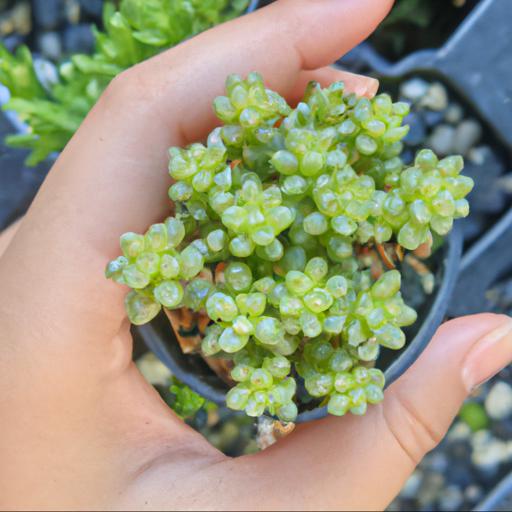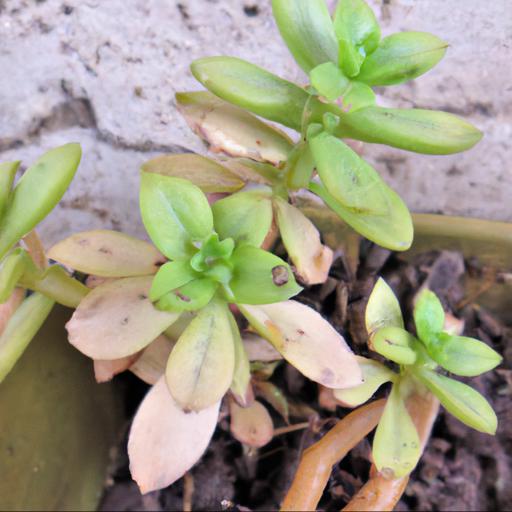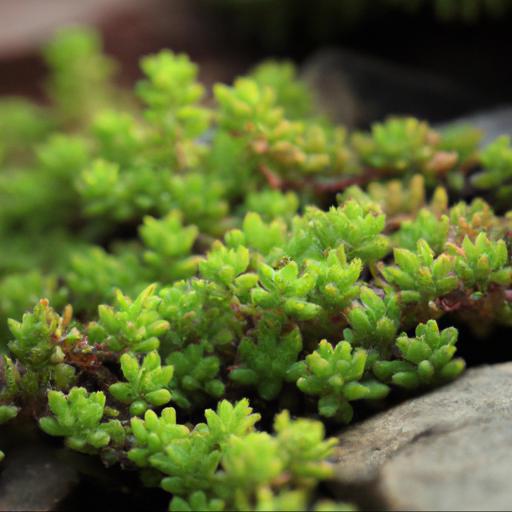Sedum dasyphyllum, also known as the Blue Carpet Stonecrop, is a low-growing succulent plant native to the Mediterranean region. This hardy plant is often used as a ground cover in gardens and landscapes due to its ability to tolerate a range of conditions and its attractive blue-green foliage.
It is also an excellent choice for rock gardens, containers, and xeriscaping. Sedum dasyphyllum is easy to care for and requires very little maintenance, making it a great choice for gardeners of all skill levels. Its low-growing habit and its ability to thrive in a variety of climates make it an ideal choice for any landscape.
Benefits of growing sedum dasyphyllum

Having always been impressed with their lack of maintenance and floor-to-ceiling foliage, sedums have always held a special place in my heart. Their beauty and low-maintenance requirements have made them a staple of UK garden design for decades, and for good reason.
Sedum dasyphyllum, also known as Silver Carpet, is beloved for its cascading foliage, resilience, and extreme versatility. Silver Carpet is a low-growing evergreen, ideal for covering tight spaces. Its small, teardrop-shaped leaves create an attractive foliage when planted in clusters.
The contrasting silver and green foliage brings a high-impact to these spaces while maintaining a low-growing structure. Another plus is that you don’t need to worry about pruning!
This makes it a great choice for those who want to spend more time enjoying their garden, and less time trimming. From a more practical standpoint, Silver Carpet also serves an important purpose. Its heat tolerance and tolerance to drought makes it an excellent choice for the rock garden or for hillsides with limited water access.
Its low-maintenance requirements also mean that it can survive long periods with limited irrigation in regions with hot summers. Overall, Sedum dasyphyllum is an invaluable groundcover for any UK garden.
Versatile, low-maintenance and visually appealing, it can bring drama and texture to a garden without the work of regular pruning. Interested in giving Silver Carpet a try in your own garden? Start by checking out your local garden center or plant nursery for plants, and you’re sure to be added to the ranks of satisfied Sedum owners in no time.
Tips for growing sedum dasyphyllum

If you’re looking to add texture and colour to your outdoor space, Sedum dasyphyllum, or the ‘Corsican Stonecrop’, is a great choice. This low growing evergreen succulent is easy to care for and provides a pretty colour feature in almost any part of the garden.
Here’s a few tips to help you get the most out of your Sedum dasyphyllum. When planting Sedum dasyphyllum, you’ll want to make sure you have a sunny spot. This plant loves the warmth of the sun and, as a succulent it needs plenty of light to help it develop its full, lush foliage.
Make sure you choose a spot where it can be free to spread and not be crowded in, as Sedum dasyphyllum can reach up to 45cm in height and 5m in width!You’ll want to keep the soil on the dry side when planting your Sedum dasyphyllum.
A dry soil environment will make for the healthiest plant and is more conducive to its natural growth pattern. If the soil stays too wet your Sedum dasyphyllum may suffer from root rot, so it’s important to choose a well-draining soil or raise your planting bed to ensure proper drainage.
In terms of feeding your Sedum dasyphyllum, it doesn’t need too much. This versatile succulent is fairly low maintenance and can often get the nutrients it needs from the soil just through its own natural growth pattern.
However, a diluted liquid fertilizer mix is an option if you feel your Sedum dasyphyllum isn’t getting enough nutrition. With these tips, you can successfully grow and maintain a healthy Sedum dasyphyllum in your garden. Its low-maintenance nature and unique texture makes it a great choice for gardeners looking for a unique succulent to fill a space.
Best of luck cultivating your Corsican Stonecrop!
Common problems with sedum dasyphyllum

As a UK garden expert, I’m here to talk about some common problems with Sedum dasyphyllum, which is also known as “stonecrop”. This perennial succulent is a popular choice for plantings in dry, sunny areas and has remarkable drought-tolerance. However, this doesn’t mean it’s completely problem-free.
The first common problem with Sedum dasyphyllum is caused by gray mold, or botrytis. This fungus causes the plant’s leaves to turn gray and die, especially during damp weather.
The second problem is root rot, which typically occurs due to overwatering. As with most succulents, Sedum dasyphyllum should only be watered when the soil is fully dry. Overwatering can lead to root rot, which is a serious problem for this plant.
Lastly, aphids can be troublesome for Sedum dasyphyllum. These tiny pests can damage the plant’s foliage, leading to deformed and curled leaves.
Neem oil and insecticidal soap can be used to help deter or kill aphids. Regularly checking the plant’s leaves and stems can help identify a potential infestation early on and reduce the damage it may cause. Overall, Sedum dasyphyllum is a relatively worry-free plant with few pest and disease issues that can cause significant damage.
With proper care, this succulent can make an attractive addition to any dry, sunny garden. With some regular maintenance, it should remain problem-free and thrive.
Bottom Line
Sedum dasyphyllum, commonly known as the Thick-leaved Stonecrop, is a species of succulent plant found throughout Europe. It is a low-growing, evergreen perennial with thick, fleshy leaves and bright yellow flowers.
It is easy to grow, drought tolerant and tolerant of a wide range of soils. This hardy plant is a great choice for rock gardens, container gardens, and ground cover. It blooms in late summer and fall and can provide a beautiful accent to any garden.
FAQ
What are the common names for Sedum dasyphyllum?
Common names for Sedum dasyphyllum include Corsican Stonecrop, Thick-leaved Sedum, and Blue Stonecrop.
What is the scientific classification of Sedum dasyphyllum?
The scientific classification of Sedum dasyphyllum is: Kingdom: Plantae; Subkingdom: Tracheobionta; Superdivision: Spermatophyta; Division: Magnoliophyta; Class: Magnoliopsida; Subclass: Rosidae; Order: Saxifragales; Family: Crassulaceae; Genus: Sedum; Species: S. dasyphyllum.
What are the characteristics of Sedum dasyphyllum?
Sedum dasyphyllum is a low-growing, evergreen succulent with fleshy, blue-green leaves. It has a trailing habit and produces small, star-shaped yellow flowers in summer. It is drought tolerant and requires little maintenance, making it an ideal choice for rock gardens and container gardens.
What is the native range of Sedum dasyphyllum?
The native range of Sedum dasyphyllum is the Mediterranean region, including parts of France, Spain, Italy, and Portugal.
How is Sedum dasyphyllum used in landscaping?
Sedum dasyphyllum is commonly used in landscaping as a ground cover or in rock gardens. It is a low-growing, evergreen succulent with small, fleshy leaves and yellow flowers in the summer. It is drought-tolerant and can tolerate some shade, making it an ideal choice for areas with limited water or sunlight.
What are the potential pests and diseases of Sedum dasyphyllum?
Potential pests and diseases of Sedum dasyphyllum include aphids, mealybugs, spider mites, powdery mildew, and root rot.

